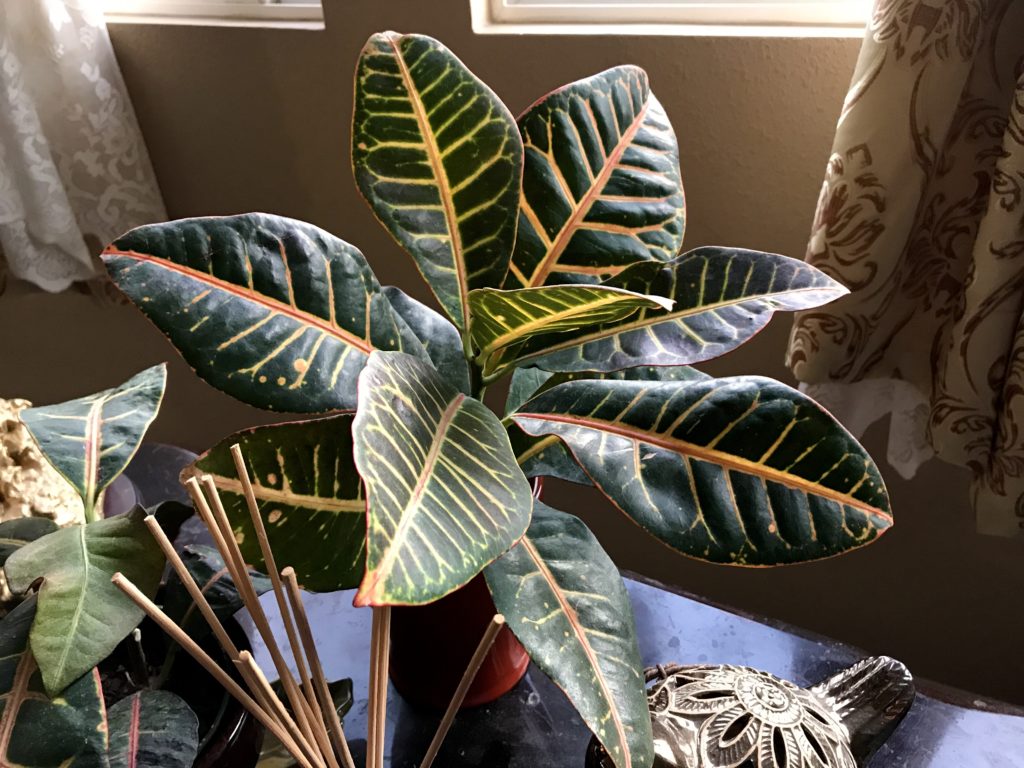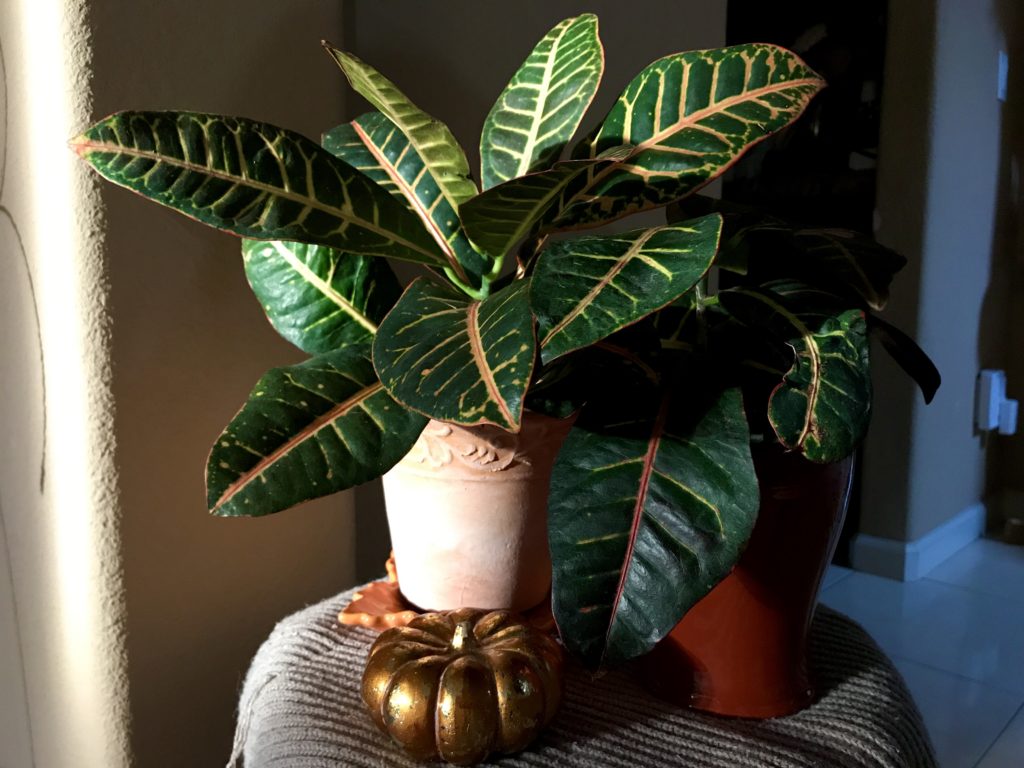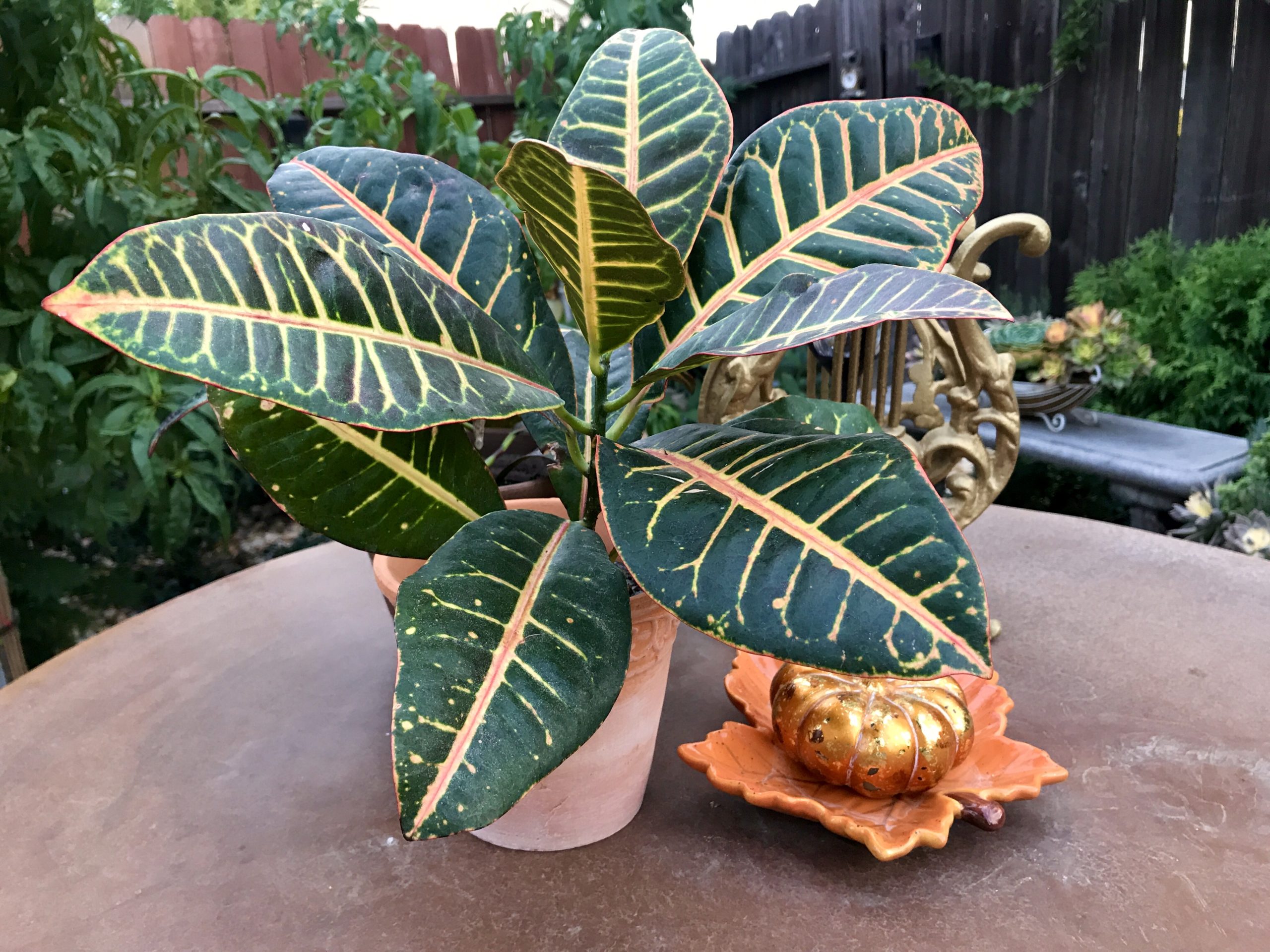Crotons are the pumpkin spice lattes of the plant world. To put it bluntly, they’re pretty basic. You’ll find them overtaking nurseries towards the end of the summer and throughout fall. Their bright orange, red, and yellow foliage are instantly recognizable. Instantly.
Crotons do have a cozy and comforting quality to them, though. While their bright, saturated leaves can, on a superficial level, come off as gaudy, they also readily give a space a dose of personality. Their foliage certainly gives off a warm, autumnal vibe. Plus, these commonplace plants are hardy and affordable, great for novice plant parents. You would have to go through extraordinary measures to kill a croton plant. And even if you do, it’s certainly won’t be at the cost of a rare hoya or trendy fiddle leaf fig.
While they might not be the most exciting species in your houseplant collection, crotons are quite agreeable and give you a bang for your buck. So let’s take a look ahead at all of the qualities and care requirements of this understated fall staple.
Identifying a Croton Plant
Here, I’ll be breaking down the species codiaeum variegatum, which isn’t to be confused with the genus croton. You won’t miss a croton when you see it. These houseplants have leathery foliage with bright colors. Other than green, leaf colors include orange, yellow, red, pink, white, and more — the colors come from a concentration of anthocyanin. The variegation appears as spots, veins, and blotches. The leaves typically measure between 4 to 6 inches and come in many different shapes, including oval, lance, linear, lobed, and more. In nature, they’re usually 10 feet tall but also come in smaller and larger sizes.
Identifying Different Types of the Croton Plant
Crotons come in a wide variety of colors, shapes, and sizes. Here are a few that I frequently encounter at nurseries in northern California:
- Croton Petra: The most common variety, the petra has shield-shaped leaves with yellow, orange, and red veins.
- Oakleaf Croton: The oakleaf kind also has colorful veins and comes with dark green or bronze lobed-shaped leaves.
- Eleanor Roosevelt Croton: This variety flaunts narrow green and deep red leaves with yellow splashes.
Understanding the Context of the Croton Plant
Crotons come from tropical forests in Southeast Asia and parts of Oceania. In Greek, croton means tick, which alludes to the shape of the croton seed. The genus “Codiaeum” means head in Greek. In Ancient Greece, crotons were woven into laurels worn on the head by classical Greek heroes.

Caring for Your Croton Plant
Crotons are seldom finicky plants as long as you water them thoroughly and keep them in temperatures above 50°F (above 70° is ideal). They hate drafts — don’t leave them near cold windows! These splashy beauties like moist soil but abhor wet feet, so allow them to dry out before you go in with the watering can. You may need to crank up your watering frequency and humidity levels in warmer months. Crotons also appreciate feedings throughout the spring and summer. Give them liquid fertilizer every week, or put slow-release pellets into the soil.
Last, but certainly not least, give your crotons plenty of bright, indirect sunlight so that they can stay colorful. While they can tolerate direct sunlight, they may get scorched, so dappled lighting is best if you keep them outside.
Propagating a Croton Plant
Propagating crotons is easy. Cut off a stem that’s 3 to 4 inches long, then remove a few bottom leaves so that new roots can grow. White sap may ooze from the fresh wounds, so seal your cutting by wetting the ends. Place the cutting in soil with a well-draining mix — strong, healthy roots should grow in about a month. Do keep in mind that crotons are toxic for both people and animals. Their sap may also be irritating to the skin, so always wash your hands thoroughly after handling.

Troubleshooting Croton Problems
Crotons are low maintenance. That said, they will pose problems as any plant will when subject to harsh conditions. Here are a few issues and the remedies that will help!
- Droopy leaves: Just like peace lilies, crotons will let you know when they’re thirsty. Droopy leaves usually indicate that your plant wants water. Crotons appreciate thorough watering but don’t like to have wet feet.
- Leaf Loss: It’s normal for older leaves to drop, but lower leaves falling may be a sign that your plant wants more humidity. You can use a humidifier or place your pot in a tray of water with pebbles. On the flip side, it may be a sign that you’re overwatering. If you notice mushy roots and a pungent smell, you might have root rot. Cut off the diseased tissue and change the soil.
- Pests: Crotons don’t commonly get pests, but they occasionally get spider mites and other creatures. Cut off severely damaged leaves and spray down your plant with neem oil.
Sources
- Reader’s Digest: Success With Houseplants
- https://www.britannica.com/plant/croton-plant-species
- https://www.almanac.com/plant/croton
- https://gardeningsolutions.ifas.ufl.edu/plants/ornamentals/croton.html
- https://homeguides.sfgate.com/care-croton-petra-44015.html
- https://homeguides.sfgate.com/keep-color-croton-houseplants-69754.html
*No slides this week. Let me know if y’all want them back!
